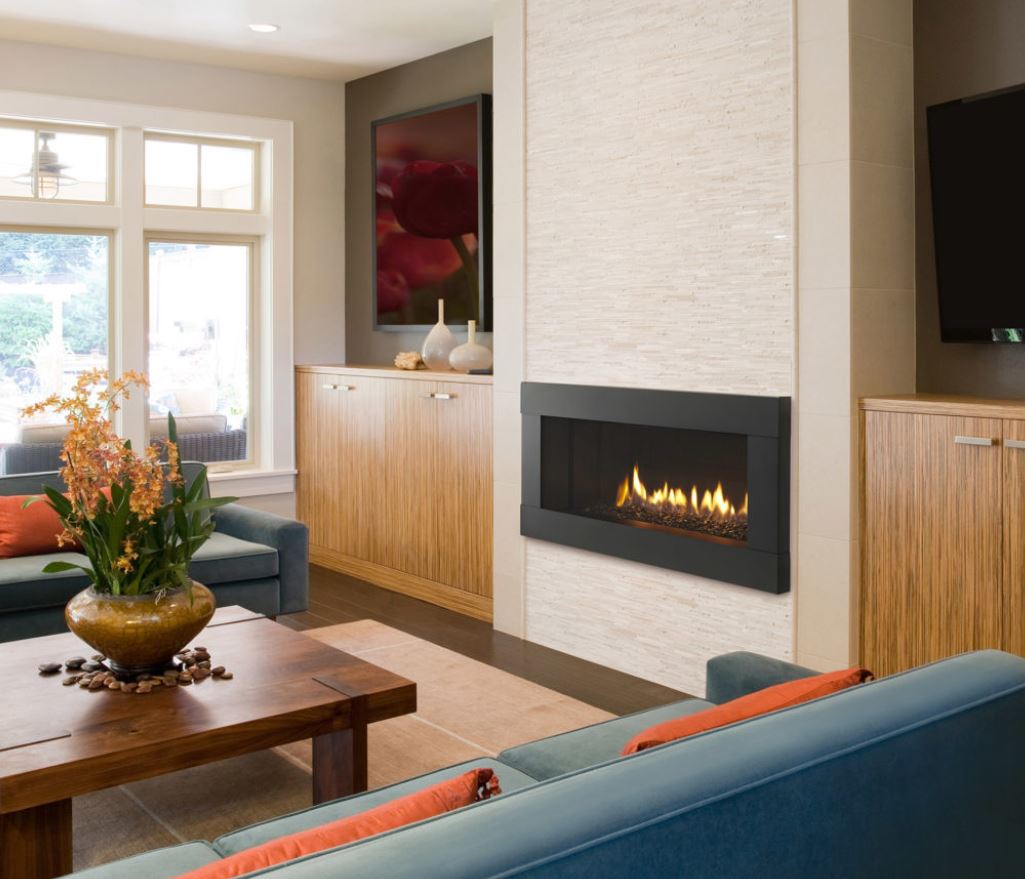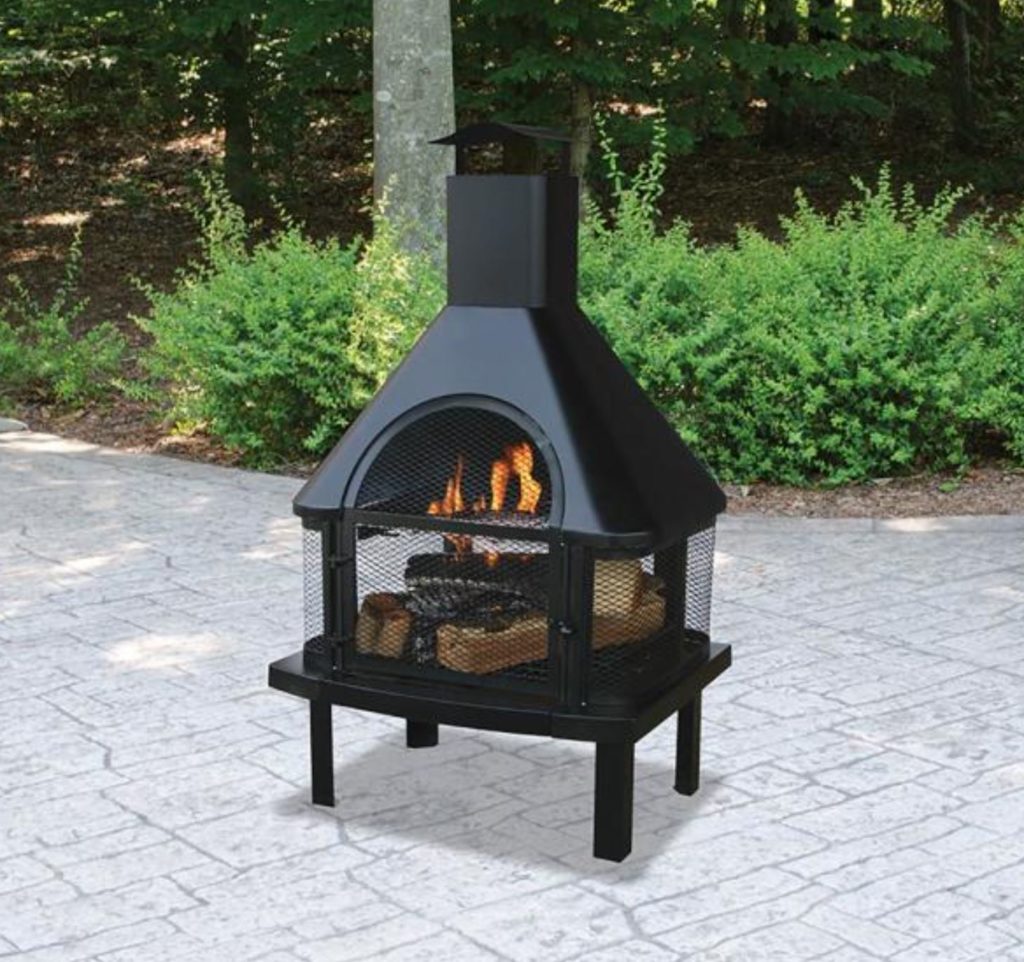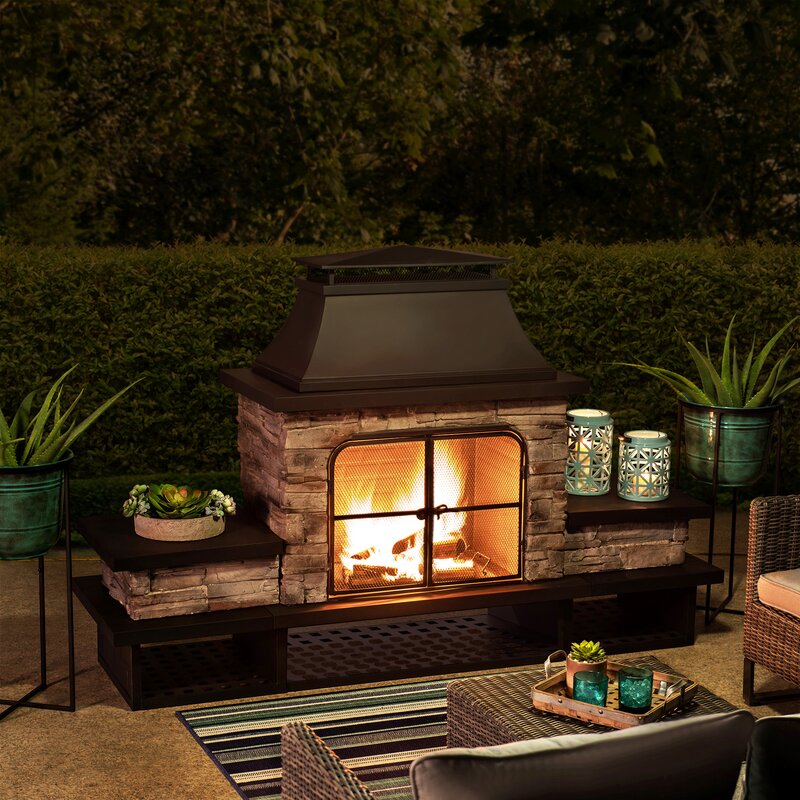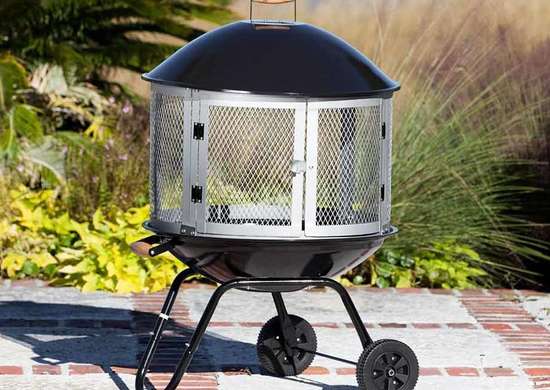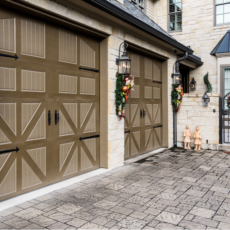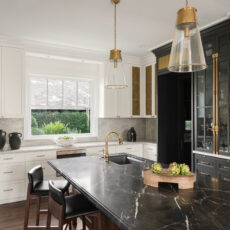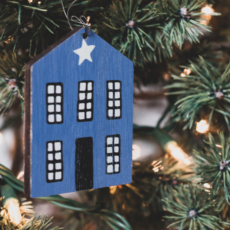As cooler weather heads our way, it’s time to look at your fireplace. I love the chance to curl up next to a well-decorated fireplace and relax in cooler temperatures. In Houston, we rarely have weather that calls for an indoor fire, but it remains a pleasantry that I associate with the welcoming of autumn and winter. There are so many options for indoor and outdoor fireplaces that I thought I’d share an overview to help you determine the best solution for your family.
Before we get into aesthetics, let’s cover safety and maintenance upfront. Your chimney should be professionally inspected once a year. Putting off your inspection can lead to expensive repairs that are typically avoidable with proper maintenance. According to MyChimney.com, “Every year in the U.S. homeowners lose over 200 million dollars as a result of continuing to use unsafe systems.” Additionally, the Chimney Safety Institute of America suggests cleaning fireplaces when 1/8-inch of sooty buildup is evident inside the chimney and flue system. How quickly this accumulation occurs obviously is tied to how frequently your fireplace is used.
Types of Fireplaces
An electric fireplace uses an electric heater to mimic burning wood. It does emit warmth but because there isn’t any wood burning, there’s no ash to clean up and little maintenance. However, some people miss the scent of a wood-burning fireplace. If you really like the ambiance of an open flame, you could also consider a fire pit grill with the added function of wood-fired cooking!
Another option to consider is a gas fireplace, which looks quite real and relies on natural gas. Gas fireplaces produce a small amount of smoke that requires venting, so some feel that this is much closer to a traditional fire. These tend to be more manageable than a wood-burning fire because you can control how much gas is used to increase or decrease the strength of the fire.
Within the gas fireplace category, there are two options: gas logs or gas inserts. Gas logs are typically made of ceramic and can be constructed to look like a variety of wood types. The benefit of gas logs is that since there’s no real wood burning, there’s little to no clean up. Gas inserts (like the one shown here) is literally a structure that’s inserted into an existing fireplace. For that reason, these are often mistaken for traditional wood-burning fireplaces. This transformation also typically leads to greater gas efficiency. If you’re renovating an older home, this is certainly a good consideration.
A growing trend is extending living spaces outside with outdoor fireplaces or fire pits. The Spruce ranks the UniFlame Steel Outdoor Fireplace with Chimney as the best overall outdoor fireplace, saying “this 360 degree pick comes with a slide out cooking grill that’s big enough to fit a few burgers and hot dogs.” We love that the compact design (25 inches wide and 45 inches high) can fit nicely on patios large and small and that the warmth can be enjoyed from all sides of the fireplace. Priced at $195, this is an economical solution.
For a larger, higher-end outdoor fireplace, we like The Spruce’s choice of the Quillen 52-inch high and 82-inch wide Wood Burning Outdoor Fireplace from Wayfair (shown below). This pick is more of a commitment both from a size and price perspective ($2,599.99) but its stone and rust-resistant powder-coated steel means this selection is likely to resist rust and wear from the weather. We especially like the shelves on either side of the fireplace that allow you to incorporate some nice accessories to polish off the look. A storage area underneath is the ideal place for firewood that is out of sight. Yes, even outdoors, we like to avoid clutter.
I fondly remember my grandparents’ free-standing stone fireplace. They lived on two acres in Vienna, Virginia, just outside of Washington, DC so they could place it in the back yard, far from the house. I believe my grandfather built it himself with a flagstone patio, ample seating and grills to cook over open flames. Since not everyone has that much space, this version still gives the impression of a pretty and compact stone fireplace.
For some homeowners, we’re recommending fire pits as an alternative to an outdoor fireplace. We recently helped one of our clients create the gorgeous backyard below with multiple fire pits placed around the pool. Not only do the fire pits add an elegant and unique look to this landscape, they’re also strategically positioned so that the residents and guests can warm up by the fire when they’re not swimming. The primary difference with fire pits is that they feature an open flame, rather than fireplaces being enclosed with a chimney. This boils down to personal preference, but we recommend that homeowners with young children and/or pets think carefully about the open flame concept and their placement in the yard.
Another convenient feature on some fire pits is wheels that enable them to be moved. It’s nice to be able to roll your fire pit to the garage or other storage area during the summer months. You can also easily move fire pits like these to other areas of your patio when you’re entertaining.
If you don’t love your fireplace, why not give it a facelift? We did several of those during the shutdown. People spent more time looking at their fireplaces and decided they no longer loved them. We added new tile, replaced tile with stone, painted the surrounds and spruced up the mantels and surrounding shelves. This is a great way to update your living room area without redecorating the entire room.
Fire pits and fireplaces offer creative ways to update the look of your home and design gathering spaces for family and friends alike. If we can help you plan your home remodel or new construction that incorporates some of these ideas, contact us.
If you’re also interested in tips for decorating your mantel, see “Mantel Décor and More!” on our blog.

